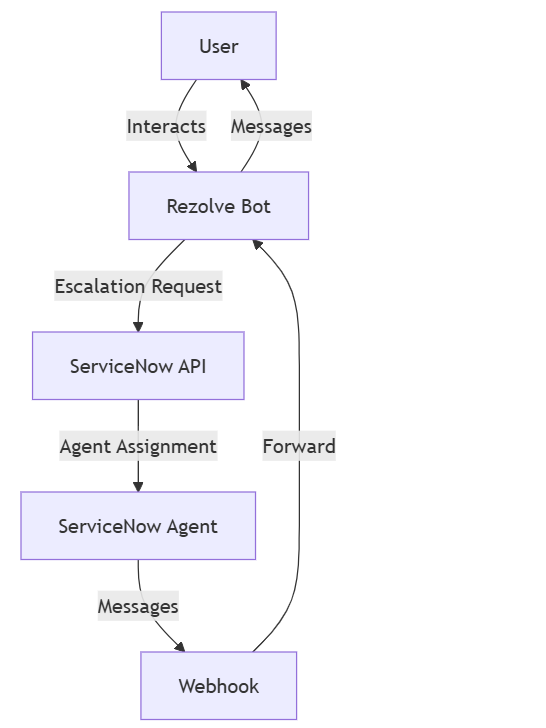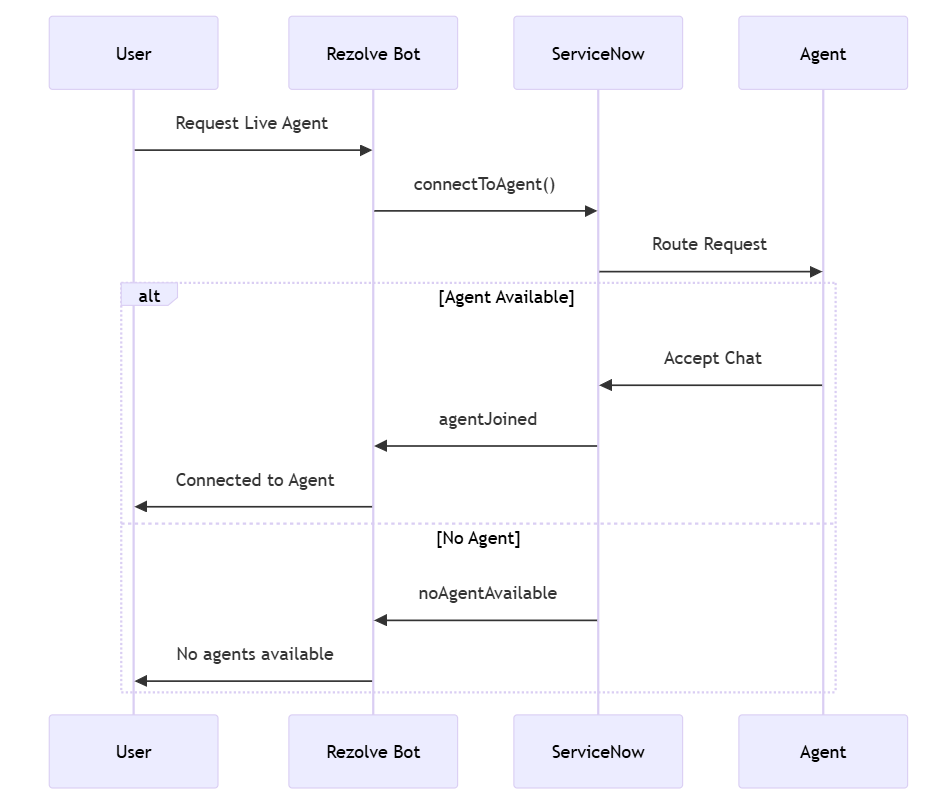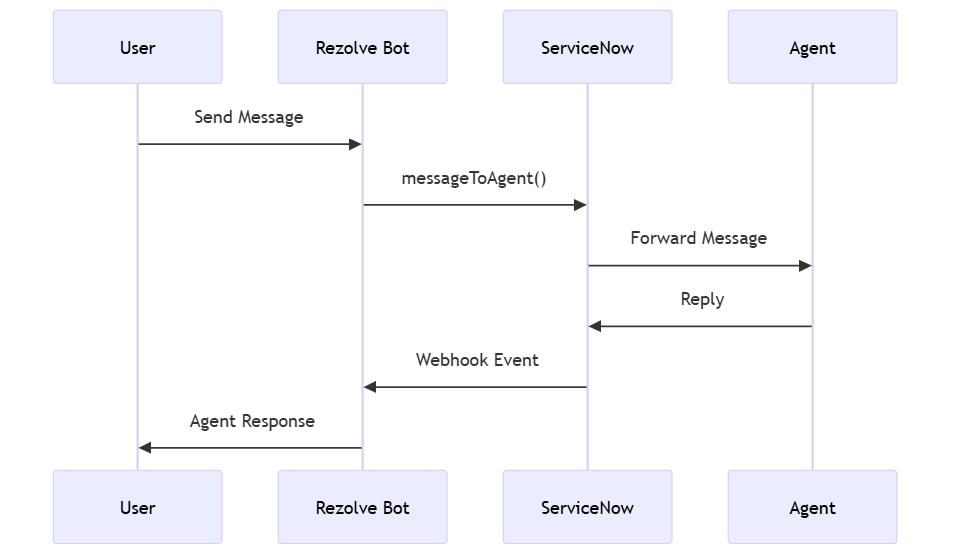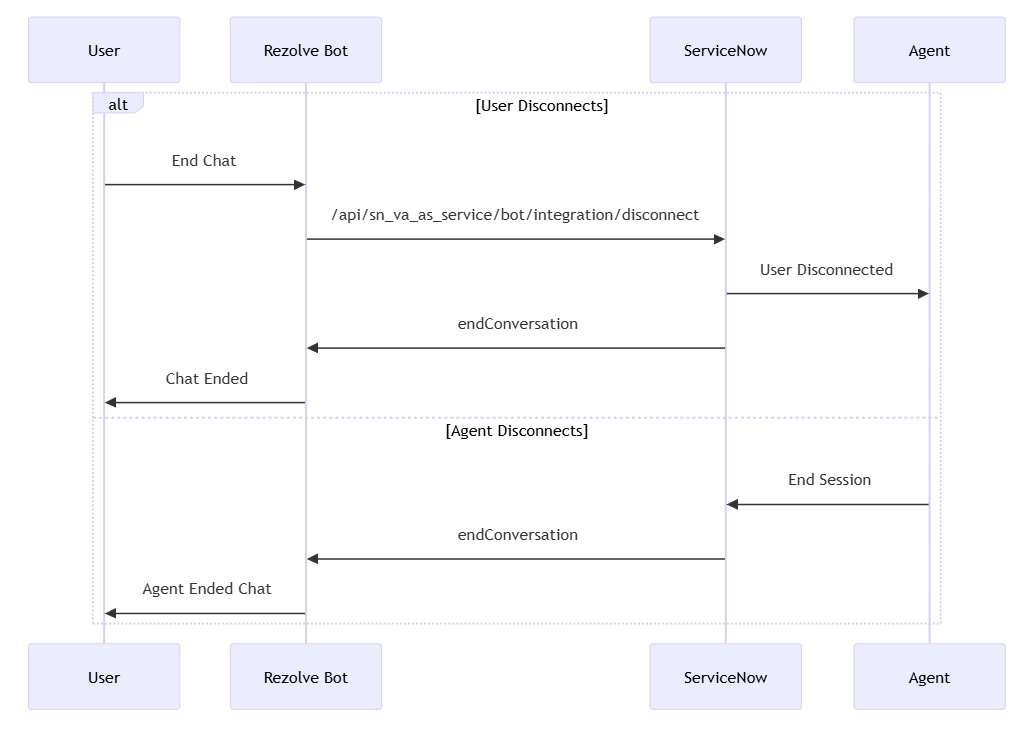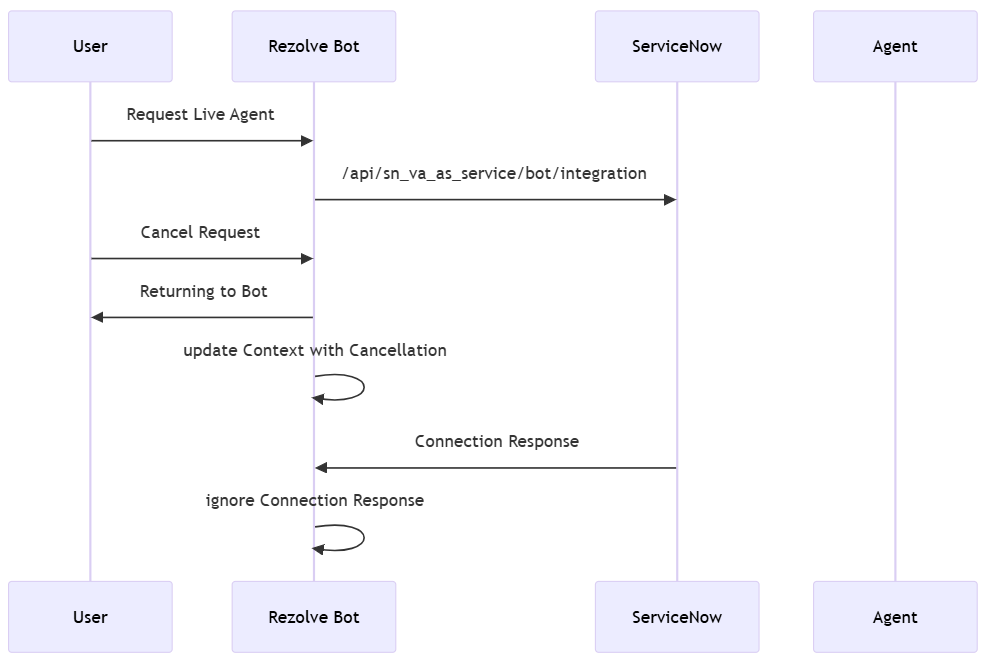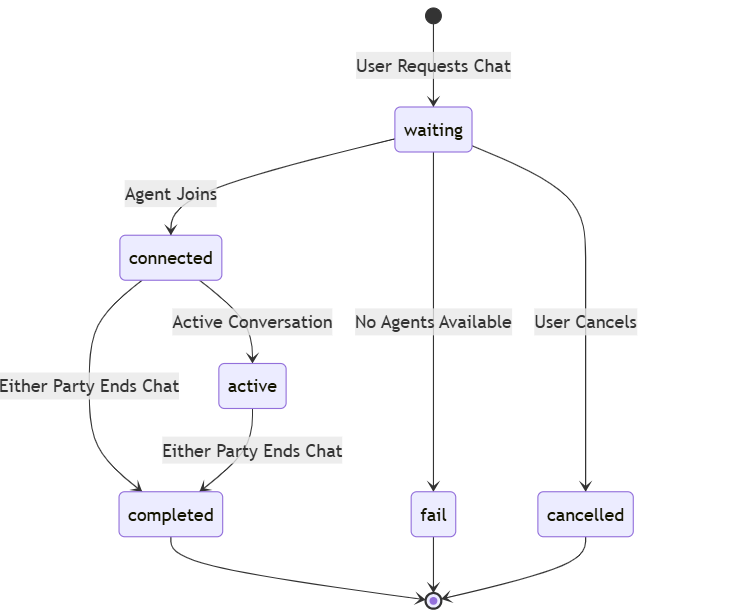ServiceNow LiveChat Integration Technical Specification
ServiceNow LiveChat Integration Technical Specification
ServiceNow LiveChat Integration Technical Specification Table of Contents • Overview • Architecture • Components • Integration Flow • API Specifications • Security • Error Handling • Configuration Overview The ServiceNow LiveChat integration enables seamless handoff between automated bot conversations and human agents. This document outlines the technical implementation details, architecture, and workflows.
Key Components
-
Bot Framework Middleware - Handles message routing and session management
-
ServiceNow API Client - Manages API communication with ServiceNow
-
Webhook Handler - Processes incoming events from ServiceNow
-
Session Controller - Maintains chat state and context Integration Flow
-
Escalation Flow
-
Message Flow
-
Disconnection Flow
-
Cancellation Flow API Specifications Authentication
-
Token Generation POST /oauth_token.do Content-Type: application/x-www-form-urlencoded
{
grant\_type: "password",
client\_id: string,
client\_secret: string,
username: string,
password: string
}
Response:
{
"access\_token": string,
"refresh\_token": string,
"expires\_in": number,
"token\_type": "Bearer"
}
ServiceNow API Endpoints
- Connect to Agent POST /api/sn_va_as_service/bot/integration Authorization: Bearer
{
"requestId": "string",
"action": "AGENT",
"token": "1234",
"clientSessionId": string,
"silentMessage": false,
"nowBotId": "A85PWLERF",
"message": {
"text": "Live Agent Support.",
"typed": true,
"clientMessageId": "ABC-123"
},
"contextVariables": {
"request\_on\_behalf\_of": "username@contoso.com",
"request\_topic":"Pay"
},
"userId": "username@contoso.com",
"emailId": "username@contoso.com"
}
Webhook Configuration ServiceNow needs to be configured to send events to our webhook endpoint. This enables real-time communication for agent messages, status updates, and session management.
- Webhook Endpoint POST /api/v1/snowBot/receiveMessage Content-Type: application/json Authorization: Bearer Request Parameters:
{
// Unique session identifier from ServiceNow
clientSessionId: string,
// Unique identifier for the chat request
requestId: string,
// User identifier
userId: string,
// Current status of the chat session
status: string,
// Error message if any
error\_message?: string,
// Indicates if the chat session is completed
completed?: boolean,
// Indicates if agent is actively chatting
agentChat?: boolean,
// Indicates if agent is taking control of conversation
takeControl?: boolean,
// Variables from ServiceNow
clientVariables?: {
[key: string]: any,
tenantId: string,
botId: string,
conversationId: string
},
// Array of message activities
body: Array<{
// Type of message
uiType: string,
// Text message content
message?: string,
// Value for images or other content types
value?: string,
// Agent information
agentInfo?: {
agentName: string
},
// Type of action for ActionMsg
actionType?: string,
// Options for Picker type messages
options?: array
}>
}
Response: 200 OK - Successfully posted into conversation 400 Bad Request - If requestId or botId is invalid 500 Server Error - For processing errors 2. Common Status Values
status: {
// Chat session is active
'active',
// Waiting for agent
'waiting',
// Connected to agent
'connected',
// Chat session completed
'completed',
// Chat session failed
'fail',
// Chat request cancelled
'cancelled'
}
-
State Transitions
-
Special Cases a. Agent Taking Control
{
"status": "connected",
"takeControl": true,
"agentChat": true,
"body": [{
"uiType": "ActionMsg",
"actionType": "AgentControl",
"message": "Agent has taken control of the conversation"
}]
}
b. Session Completion
{
"status": "completed",
"completed": true,
"body": [{
"uiType": "ActionMsg",
"actionType": "EndConversation",
"message": "The conversation has ended"
}]
}
c. Error Handling
{
"status": "fail",
"error\_message": "No agents are available to chat",
"body": [{
"uiType": "OutputText",
"message": "We're sorry, but all agents are currently busy. Please try again
later."
}]
}
Security
- Authentication OAuth 2.0 token-based authentication o Encrypted credentials storage o Token refresh mechanism o
- Data Protection End-to-end encryption for messages o Secure file transfer o Error Handling
- Connection Errors Automatic retry with exponential backoff o Fallback to bot conversation o User notification o
- Session Management Timeout handling o Reconnection logic o Session state preservation o Configuration Required Environment Variables SERVICENOW_CLIENT_ID= SERVICENOW_CLIENT_SECRET= SERVICENOW_USERNAME= SERVICENOW_PASSWORD= SERVICENOW_INSTANCE= WEBHOOK_SECRET=
